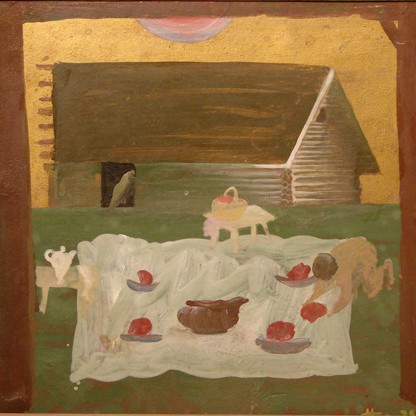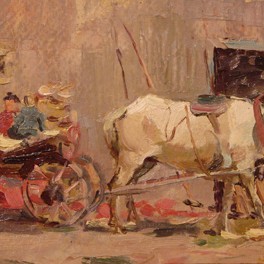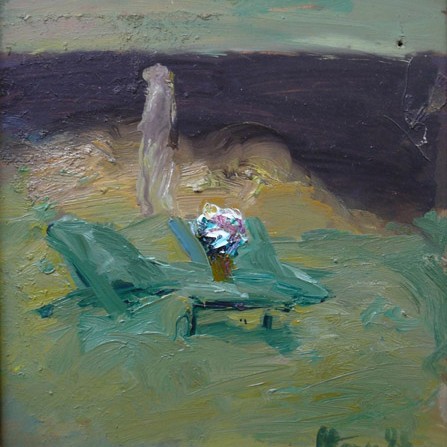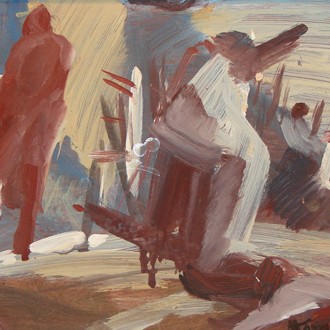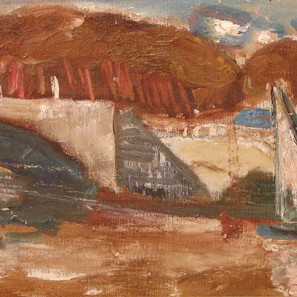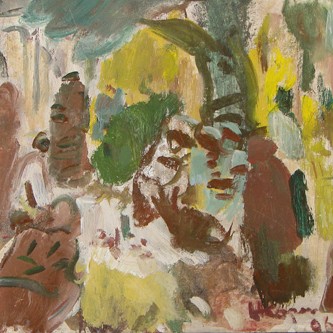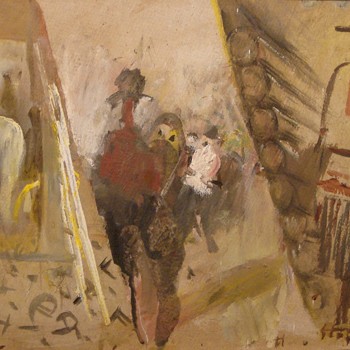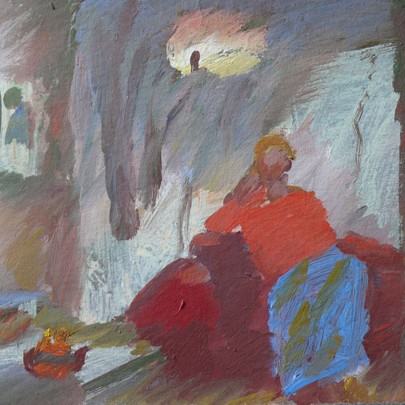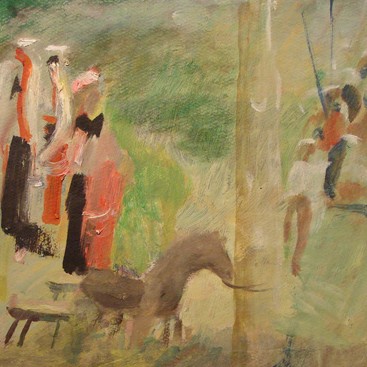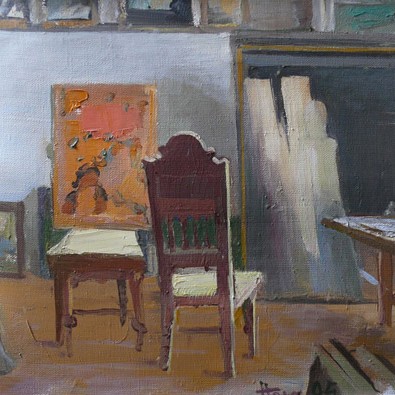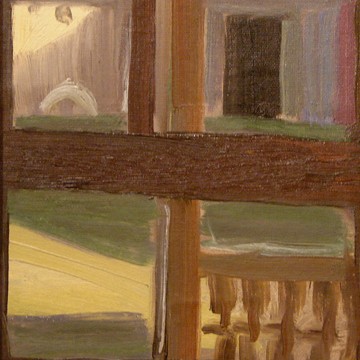On his 80th birthday Nikolai Kormašov has a little unexpectedly come to the limelight again: several exhibitions here and there, reviews in daily newspapers, rumour about an art’s magazine’s interest in a longer interview etc. Why “unexpectedly”? Because the prevalent logic of writing art history - i.e. paying attention primarily to everything new - so easily looks past the authors who work on deepening the furrow that they have once ploughed. Kormašov is exactly that kind of an artist: not a constantly changing avant-gardist but someone who is interested in moving within the boundaries of his own human and artistic capabilities. Exploring them from inside, not crossing them. Trying to understand what those boundaries mean rather than destroying them. And yet Kormašov is an artist about whose art something sensible can be said only when the last painting has been completed – as the boundaries of a talented artist are the source of endless inspiration.
All the abovementioned is equally true about the études. It may seem surprising - even as we have understood that for Kormašov an étude is not merely a preparatory genre, an étude seems to be somewhat experimental by nature. If an artist would like to cross the boundaries he should choose the format of an étude – and vice versa: if the objective is to explore the boundaries from inside, more dignified genres and those offering philosophical generalisation should be focused on: two meters high easel pictures, sculptural groups etc. But no, says Kormašov. Here are my études – and those are my boundaries.
Perhaps it is the painting style that suggests tremendous “discoveries” and “turmoil” going on in those works. It is true - an étude enables Kormašov – like many painters – be freer, more dynamic and spontaneous whereas a large-size painting unavoidably imposes correctness and professional accuracy. Yet this verve is not expressive, directed outwards, projected by the artist. To the contrary: the dynamics of Kormašov’s études is of the opposite direction – from outside towards inside. It is intimate, emotional, contemplative dynamics, the inspiration for which lies in…look, that cottage corner over there, that forest grove over there, that patch of a lake over there. In the mornings (because it seems that Kormašov works mainly in the mornings when the senses are at their sharpest and open to new experiences) when he picks up his paint-box and starts to work, he is not looking for elements in nature that would correspond best to his inner feelings. He observes nature, studies it and then moves on together with it.
It would really be best to choose different paintings for philosophical generalisation. It is because in his études Kormašov first of all makes a clear distinction between the sense of duty and obligation to achieve. He is a conscientious painter if that would mean for example that one should paint or that art could not be done without respecting art. Yet he does not feel the obligation to achieve, i.e. the burden of professionals to paint a “decent” and “mature” painting where everything is spick-and-span and, in case of good luck, has a moral to it. Kormašov proves nothing. He paints.
And another reason why his études are not for philosophising is that their value lies elsewhere. The generalisation here is not intellectual but emotional, intimate, intuitive, optimistic, questioning, searching, happy. That is what distinguishes an artist from a professional. The latter always gets it done but the first is always interesting to look at. Because it is always interesting to look at someone who experiences the boundaries set to him by the world as an inspiration rather than an obstacle.
.png)
